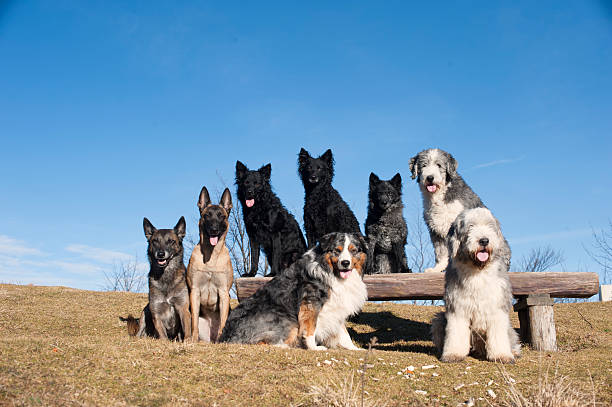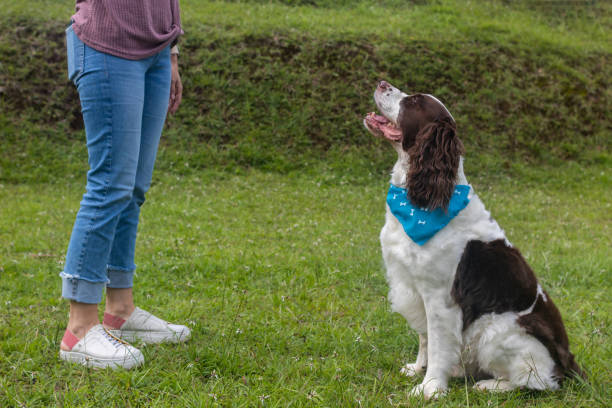Service dogs are meticulously trained to assist people with disabilities. They are geared up to help their owners with tasks they cannot accomplish independently. These dogs can be conditioned for a myriad of unique specializations, enhancing their significance and versatility. In this article, we will delve into the method of training a service dog and what results you can expect from your pet. At the end of this piece, the aim is for you to have an understanding of how a service dog is trained!
Training your service dog should be both mentally and physically stimulating. After all, it’s essential to keep your pup active to prevent destructive behaviours! Be sure to provide plenty of toys for them to play with. You can even make some of the toys yourself! Record the activity on camera when you find a toy that he likes. It’s good to have a collection of videos to show your pup when they are disobedient!
Below are the steps you should take when training your service dog. Remember that these are just general guidelines for teaching your pup how to behave. You can use these suggestions as inspiration, but never force yourself into doing them! Be flexible while training and use your judgment regarding how you should train your dog.


Steps
1. Obedience Training
As a service dog, your pup will be performing tasks that can help his disabled owner. That’s why basic obedience is the most critical part of training a service dog! It would help if you start by teaching your dog simple commands like “sit” and “stay”. After he’s mastered this, you can move on to more complicated tasks like “rollover” or “fetch my keys”.
2. Use of the Commands
When training your service dog, you must use consistent terminology! Using different words for the same task will confuse your pup. Also, be sure to use the same tone for each command so that he knows when you’re serious or playful!


3. Practice Reinforcement
Once your service dog has mastered his basic commands, it’s time to practice reinforcement. Here is where treats come into play! Be consistent with using the treats as a reward during practice. If your dog obeys the command consistently without treats, you don’t have to use them so frequently!
4. Table & Chair Training
Believe it or not, some service dogs are trained to stand on tables and chairs! This is an essential skill for those who depend on their pup for support. Check your local pet store for a sturdy chair to hold your dog’s weight. Then slowly introduce the idea of standing on it! Remember not to push him too hard; you want this training to feel like a game!
5. Working with Other Dogs
If you have pets or children in your home, ensure they understand how to behave around your service dog! They should know not to approach him without first getting permission from you. Also, they mustn’t tease or hurt him. This can damage his psyche and cause permanent emotional problems down the line.


6. Familiarity with the Surroundings
Service dogs need to be familiar with the environment they’ll be working in. They should know where the buttons and levers on appliances and doors are located. Your pup should also learn to walk next to you without pulling, tugging or getting distracted! You can teach him advanced skills like running between your legs for protection as time progresses.
7. Dress Practice
Service dogs may be required to wear vests, bandanas, or other equipment. Practice putting these on your pup before you take him out in public! This will help him get used to the equipment and prevent discomfort when you’re in crowded spaces.
8. Obedience Outside of Training
Many trainers will tell you that training is only half of what it takes to make a good service dog. Your pup should be trained and ready for anything, but it won’t matter if he’s not obedient outside training hours, it won’t matter! Practice obedience around the house and in crowded situations so you can trust him off-leash.
9. Public Access
Only after your service dog has mastered all these tasks should you try taking him out in public! Start by walking him around your neighbourhood. As he gets more comfortable, gradually start teaching him to handle stress. This will be the ultimate test of his obedience and abilities!


General Tips
One important thing to remember during service dog training is that it’s not about you. It’s about your dog and what he’s capable of doing. Some tasks may take years to master, and that’s okay! You should never push training on him if it doesn’t feel right.
- Don’t get discouraged if your pup can’t learn a skill in one day! It may take weeks or months before he gets the hang of it.
- If training is getting frustrating, take a break! Training should be enjoyable for both you and your dog.
- When teaching advanced skills like leash pulling, don’t forget that treats are not the only form of reinforcement! Try giving your service dog lots of pets and praise when he obeys.
- Always make sure your service dog is exhibiting behaviour you like before rewarding him. If he starts doing something terrible, don’t reward it! This will only encourage the behaviour and make training more difficult down the line.
- Keep practising your skills! If you get to a point where it feels like your dog isn’t learning anything, start from the beginning and review all of his old commands.
- Patience! Training is a long process and should be handled with care and understanding.
Conclusion
Service dogs are trained for a variety of different tasks. They can be trained to help with physical disabilities, emotional needs, or even therapy animals. Regardless of the type of service dog you’re looking for, they all need extensive training before being allowed into public places and interacting with people around them.
If you want your dog to succeed in their task- whether that’s opening doors or simply holding onto something like an object while walking downstairs- then consider enrolling them into one of the many schools dedicated to providing this kind of knowledge!


